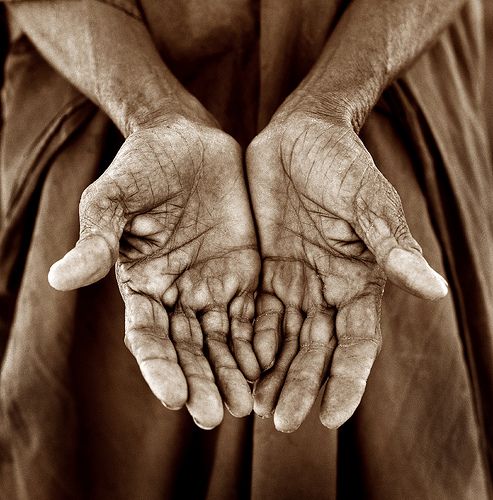By Tammy T. Stone
Why do I think I always have to be getting somewhere?
Why do I think that the world isn’t strong enough to bear the burden of my shadow, so that I have to hide it and pretend everything is okay?
Why do I think the worst thing I can do is let people down, at the expense of my own truth?
Why am I scared I will never truly belong to the communities I love and respect so much?
Our thoughts can be dizzying, terrifying things.
If you’re like me, you’ve found yourself more than once getting dragged into a very deep and intense storyline produced by none other than your mind. It may have started with a simple nagging feeling, and rather than shrugging it off, you’ve let yourself get absorbed in a drama featuring such rambunctious characters as Doubt, Fear, Guilt, Hopelessness, Confusion and Thwarted Dreams.
While these journeys are scarier than any horror film, we accept them as fact with alarming ease.
We take them to be natural extensions of “who we are” and “how life is”, and because of this, they keep returning with a vengeance.
In Buddhism, there is the belief that we will face the same situations in life until we’ve finally learned the lesson. We’ll meet people and situations that trigger us is in similar ways, until we finally get it. If we think that “getting it” means blaming people because we know it’s their fault and avoiding our challenges because we “know” they are impossible, we are on the fast track to a sequel situation.
All this is because our minds are so good at taking us along our egoistic paths and abetting our desire to avoid confronting our deepest and truest selves.
It’s not very often that we take the time to “think about thinking,” or “how we think.” We tend to assume that our thoughts are merely an extension of us, and cannot lead us astray. We don’t really question the idea that we are our minds, so we don’t critically engage with what is happening as they tear loose and run wild.
We also know that we are simply not happy a lot of the time. We feel frustrated, dissatisfied, defeated, thrown for a loop, maybe backed into a corner.
When this happens, our first instinct is to leap right into the realm of why and how.
“Why has this problem occurred, and how can I fix it?”
Then we scramble, rationalizing our behaviour, finding ways to blame the perceived culprit of the problem, or else attacking the problem with apparent, potential solutions that are fuelled by our certainty that we’ve failed before and are doomed to fail again.
“Insanity is repeating the same mistakes and expecting different results.” ~ Einstein
Problem solving is a skill we’ve developed as humans and has been key to our survival. Learning how to get from point A to point B and how to procure food and shelter, for instance, are great instances of how our thinking minds have been our ally.
However, when it comes to our more “negative” emotions and sense of being stuck, our highly evolved ability to problem-solve actually gets in the way and leads us to a dead end.
Why?
Because we are perceiving these things as “problems” in the first place.
Through meditation and mindfulness practice, we come to see that perceived problems are simply interior states, reactions of our bodies minds and spirits to our external circumstances and our habituated ways of being in the world due to our past behaviours and conditionings.
Rather than “solve,” we learn to “sit with” and accept, and understand the transient nature of our thoughts, feelings and emotions. We learn that gently regarding what is going on within us with respect but non-attachment lightens the heaviness we associate with problems, and allows us a more compassionate attitude toward our selves and the situation at hand.
We learn that “shrugging it off” does not mean avoidance, but the ability to observe how we are feeling, and watch as the feeling both arises and passes away. We even realize that problems are actually opportunities to learn and grow, which makes them the exact opposite of problems.
I’ve studied cinema for many years, and found that we can either be so absorbed and emotionally involved in a movie that we have lost all critical faculties, or that we can learn to pull back, and examine how the filmmakers constructed the film so that it could have such a powerful pull and effect on viewers.
It’s fascinating to realize that the same can be said of our minds.
We can learn to see our minds as constructions that can be understood and dismantled so that their power over our true nature can be lessened.
Sitting down with the intention of watching our thoughts appear and disappear, we see that these fickle entities are not the foundations of our identity, and from there, our opportunities to contemplate who we have become and how we can free ourselves are virtually endless.
Tammy T. Stone is a Canadian writer, photographer and chronicler of life as it passes through us. Always a wanderer, she’s endlessly mesmerized by people, places and everything in between; the world is somehow so vast and so small. She feels so lucky to have been able to work, learn, live and travel far and wide, writing, photographing and wellness-practicing along the way. She invites you to see some of her recent photography here and to connect with her on her writer’s page, Twitter and her blog, There’s No War in World, here.
Editor: Daniel Scharpenburg
Photo: Insomnia Cured Here/Flickr
Comments
- The Importance of Connection: This is How We Heal - January 29, 2021
- Let’s Remember Who We Are - January 10, 2021
- Why the Lotus Blooms: Choosing to Stand Tall {Book Review} - October 14, 2020





